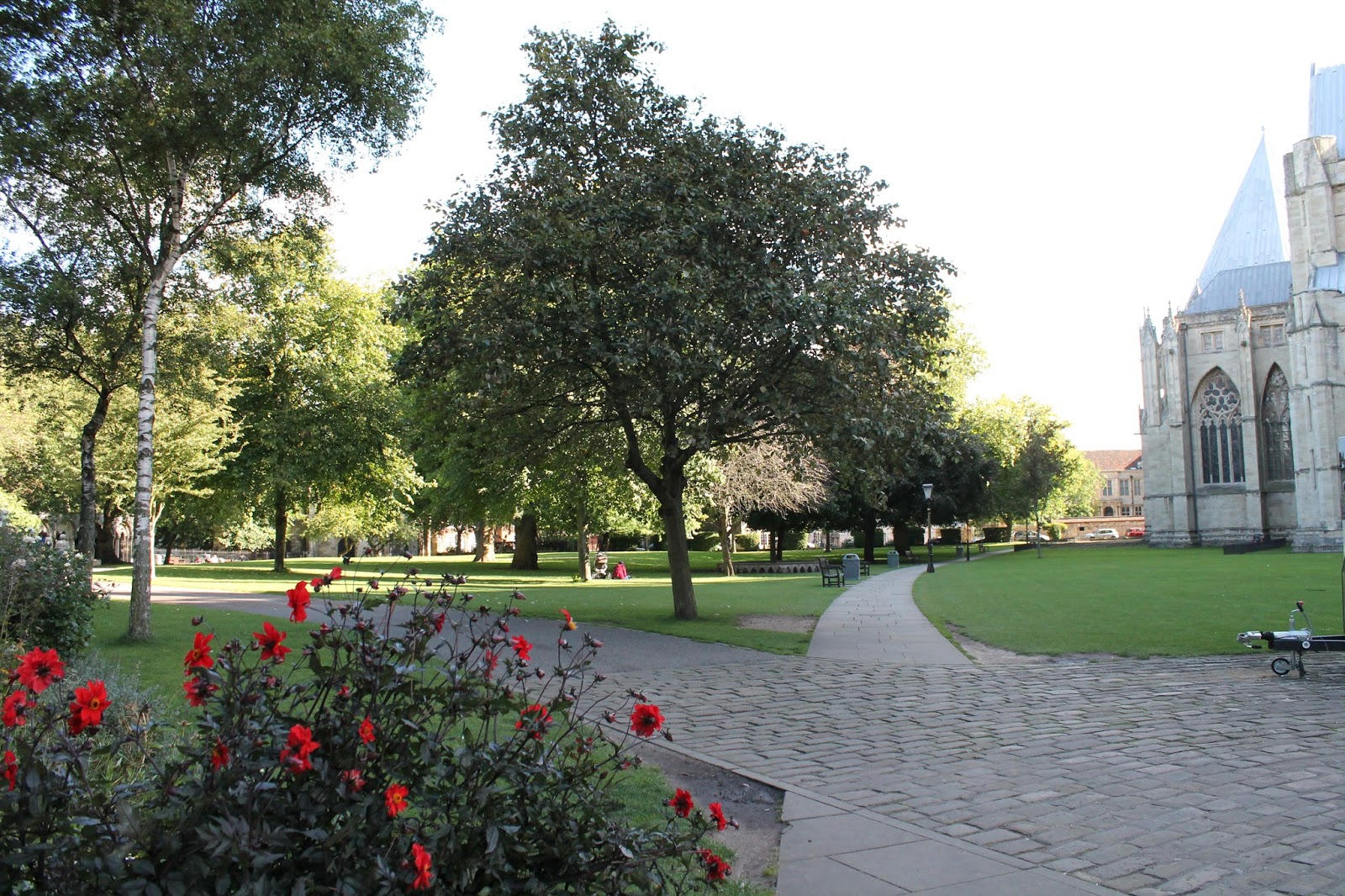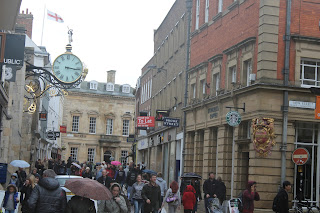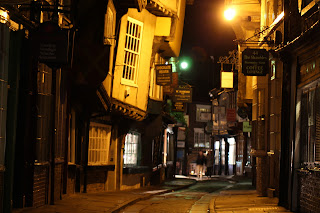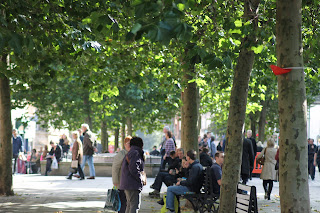This tour is great for avid walkers and those who appreciate the beauty of York's historic culture. If you have our app, Telltale Tours will reveal all....
Bootham Bar

Start at Bootham Bar, which has been used as a gateway into the city for nearly a staggering 2000 years! Originally made of wood and later rebuilt in stone, Bootham Bar was once a gate to the Roman Fortress of Eboracum. However, the Bar you see today is not the original Roman structure and it is believed that the earliest dated part of the gatehouse is in fact the external arch, which was completed in the 11th century. Bootham Bar looked very different just 200 years ago, since then certain features have been removed because the were no longer necessary, or added as decoration. The Bar has also been reconstructed over the centuries for a variety of reasons. Telltale Tours will give you the answer to everything you want to know.
 Monkgate Bar
Monkgate Bar
Not as old as Bootham Bar, Monkgate Bar dates from the early 14th century and is now the home to the Richard III museum. Originally the same height as Bootham Bar at three storeys high, a fourth storey was built in the 15th century on the orders of Richard III. Monkgate Bar has played its part throughout history, housing a certain group of prisoners and even playing a part in the Queen's coronation in 1953. This Bar has some important and interesting tales to tell....
Walmgate

Walmgate Bar has a very turbulent history and was once the primary target of the most severe onslaught to besiege the city. The Bar dates from the 12th century. The most dominating feature is the surviving barbican, which is the only surviving barbican on a town gate in this country. The Public Records Office provides information detailing the use of Walmgate Bar as a toll gate into York, with payment being collected here as early as 1280.
As already mentioned, Walmgate Bar has a turbulent history. It first came under attack during the Northern rebellion of 1489, when rebels set the Bar on fire in protest against rising taxes. The Bar came under seige again in 1644, when the Parliamentarians launched a heavy assault against the city.....but were they able to breach the walls?
 Red Tower
Red Tower
A short walk from the end of the last section of wall, which finishes at the site of the former Layerthorpe Postern, leads to a late addition to York's city walls. The Red Tower is a small and pretty 15th century building. Completed in 1490, the Red Tower was the first and only section of the city walls to be built of brick. This was a new method of construction for the period and is very likely the origin of the building's name. The Red Tower was formerly used as an oupost for ammunition storage and gunpowder manufactoring before falling into disrepair. However, there was controversy surrounding the Red Tower from the very beginning, with the building of this little, red tower being consumed by rivalry, murder and intrigue.
Fishergate Bar

Along the wall from Walmgate, this gateway into the city is of a smaller stature to the four much grander main Bars. Fishergate Bar is a one storey structure which rises no further than the height of the wall. Dating from 1315, Fishergate Bar was the main entrance into York from Selby. The Bar was set on fire during the Yorkshire rebellion of 1489 against Henry VIIs insistance on raising taxes. To prevent further damage to the Bar, it was bricked up until 1827, when it was finally reopened.
 Fishergate Postern Tower
Fishergate Postern Tower
This is a rare example of a building that has remained untouched for over 500 years. Another Tower is known to have once stood in the current position belonging to Fishergate Postern Tower. It was called Talken Tower after the Lord Mayor of 1399, Robert de Talkan. Back then, the river Foss was much wider and use to lap at the edge of Talkan Tower.
The current Fishergate Postern Tower was constructed between 1504 and 1507 and was used as the replacement for the damaged Fishergate Bar. The only change made to this tower, was for the originally flat roof to be replaced shortly after the building was completed. An unexpected discovery was made near the Fishergate Postern....
Baile Hill

On proceeding onto the next stretch of wall, you can't help but notice that it quickly ascends to the top of a mound before wnding away. This tree topped mound is Baile Hill and the former site of the Old Baile, York's second castle.
The mound of Baile Hill is all that remains of the old Bailey which was built at the same time as York castle in 1068 on the orders of William the Conqueror, who wanted to secure a foot hold in the North. The design of the old Bailey was similar to the usual Motte and Bailey layout. Over the centuries, the site of the old Bailey fell into disrepair and we know from excavations that it was never rebuilt in stone, as only wooden timbers have been uncovered. Despite this, the old castle site was briefly used during the English Civil War in 1644, when it was used to house a gun emplacement.
 Victoria Bar
Victoria Bar
Victoria Bar was opened in 1838 to ease traffic on the Nunnery Lane area of the city by allowing access to Bishophill through the city wall. This is therefore the city's newest Bar and the construction of Victoria Bar was supervised by the Railway King, George Hudson. During the construction, a Medieval gate was found to have existed, but it had been blocked with earth and stone. The reason behind this appears to be linked to the Northern Rebellion of 1569 against Queen Elizabeth I....
 Micklegate Bar
Micklegate Bar
Micklegate Bar was the entrance into York from the South, meaning it was the royal gateway into the city for any visiting monarch. The Bar is also famous for being the place where the heads of traitors were placed on spikes to discourage any rebellion or uprising. The name 'Micklegate' dates back to the Viking occupation in Yorvik, as the city was then known. The Bar was then named 'Mykla Gate', which is old Norse for 'Great Street'. This demonstrates the historical importance of this Bar.
Micklegate also had Roman beginnings, however, work on the impressive four storey structure you see today began in 1350. This Bar has a very colourful history, with the heads of the nobility being spiked on the Bar and sometimes left there for years....this happened many times during the War of the Roses.....
 The Railway Arches
The Railway Arches
Shortly after departing from Micklegate Bar, York railway station comes into full view. From here, two large arches can be seen carving their way through the defences; these are known as the railway arches. The reason for these arches was to allow access to York's first major railway station. The Railway Arches were the idea of the Railway King George Hudson. He had an entire section of the wall removed to lay the track for his new station before rebuilding it, to preserve the city's heritage.
Barker and Lendal Towers

Lendal Bridge which spans this section of the Ouse River is flanked by Four Towers. The most noteworthy two of these are Lendal and Barker Towers, which lie next to the bridge.
Lendal Tower, on the eastern bank, dates from around 1300 and once formed part of the city's defences. It was once a completely circular shape, but this was changed during renovation works in the 1500s. Lendal Tower has had numerous functions over the centuries as well as being a defence outpost. It was also used, along with Barker Tower, as a means of providing a toll stop along the river, forcing boats to stop. This occurred after the completion of Barker Tower in the 14th century.



















































